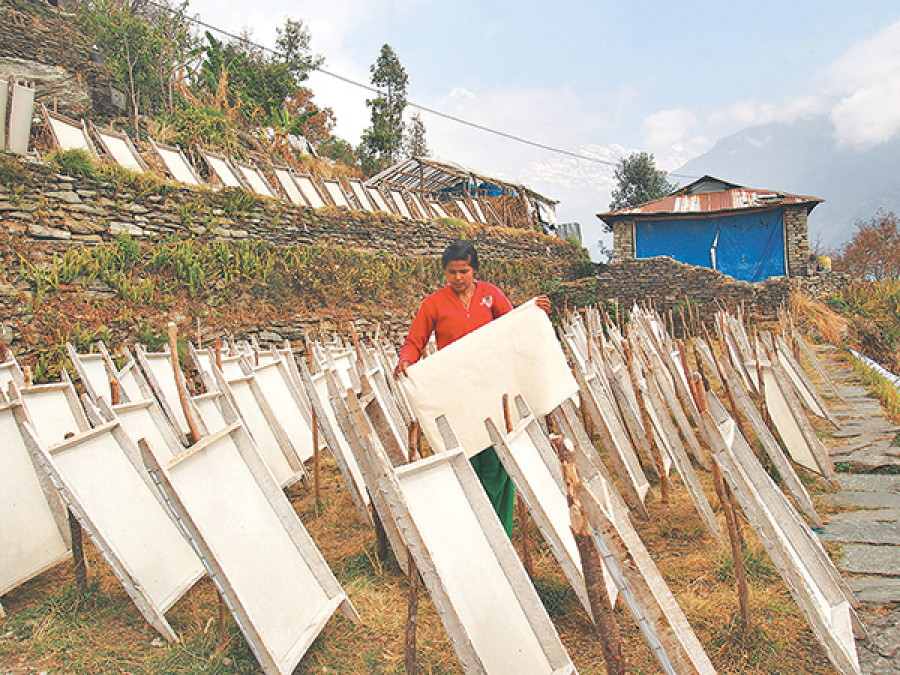Money
Locals return to work in lokta paper factory
Asmita Nepali of Sibai, Ghandruk gave up her job at a fancy goods store in Pokhara and returned to her village to work in a factory that produces lokta paper.
Dipak Pariyar
Asmita Nepali of Sibai, Ghandruk gave up her job at a fancy goods store in Pokhara and returned to her village to work in a factory that produces lokta paper. Lokta is traditional handmade paper made from the bark of the lokta plant.
She had been living in Pokhara for a few years, but she chose the job in the paper factory because she could be with her family. She is happy living at home, and she can take care of her brother and aging mother.
Roshani Gurung is another worker who has benefitted after the factory reopened since being closed in 2006 due to the Maoist conflict. The Annapurna Lokta Paper and Handicraft Factory in Ghandruk is located inside the Annapurna Conservation Area Project. It was established in 2002 with an initial investment of Rs600,000 by Purna Gurung, a local of Ghandruk.
“We were forced to shut down operations due to pressure from the Maoists,” said Purna Gurung. The factory reopened in 2013 with an additional investment of Rs400,000. The factory employs 10 people. Two employees go to the surrounding jungles to gather lokta.
The chief raw material used in making traditional Nepali paper is the bark of the lokta plant which grows about 5-7 feet tall. The workers collect 60-80 kg of lokta daily. They are paid Rs30 per kg.
The lokta collected from the jungle needs to be soaked in water for 24 hours to remove unwanted growth covering the bark.
The plants are then heated in electrical heaters for around 4 hours, liquefied into mixtures and then cooled with water before being spread over a frame as a thin paste. The frames are left in the sun to dry, which takes about 2 hours in the winter and half an hour in the summer. The paper is then ready.
The electrical heaters, donated by the Alternative Energy Promotion Centre, has increased the factory’s productivity. “Previously, it used to take a whole day to heat the lokta plants. Now it can be done in 4 hours,” said Gurung. “We are saving on firewood, and carbon emission has also decreased.”
Gurung said that there was high demand for lokta paper. He added that 5 gram paper sold the fastest as it is used to make incense. More than 50 women are engaged in making incense.
They buy lokta paper to make handmade incense which is sold for Rs90 to Rs120 in various markets in Pokhara. According to Gurung, 10 gram lokta paper is used to make books and note copies, 20 gram paper is used for diaries and visiting cards and 40 gram paper is used to make ID cards.




 16.24°C Kathmandu
16.24°C Kathmandu















